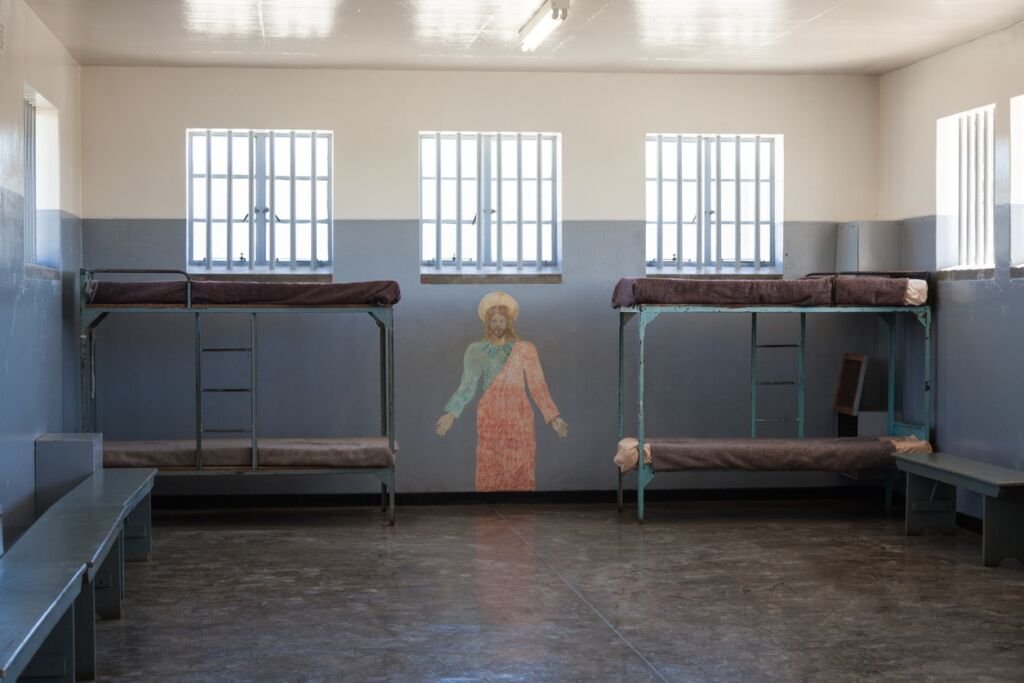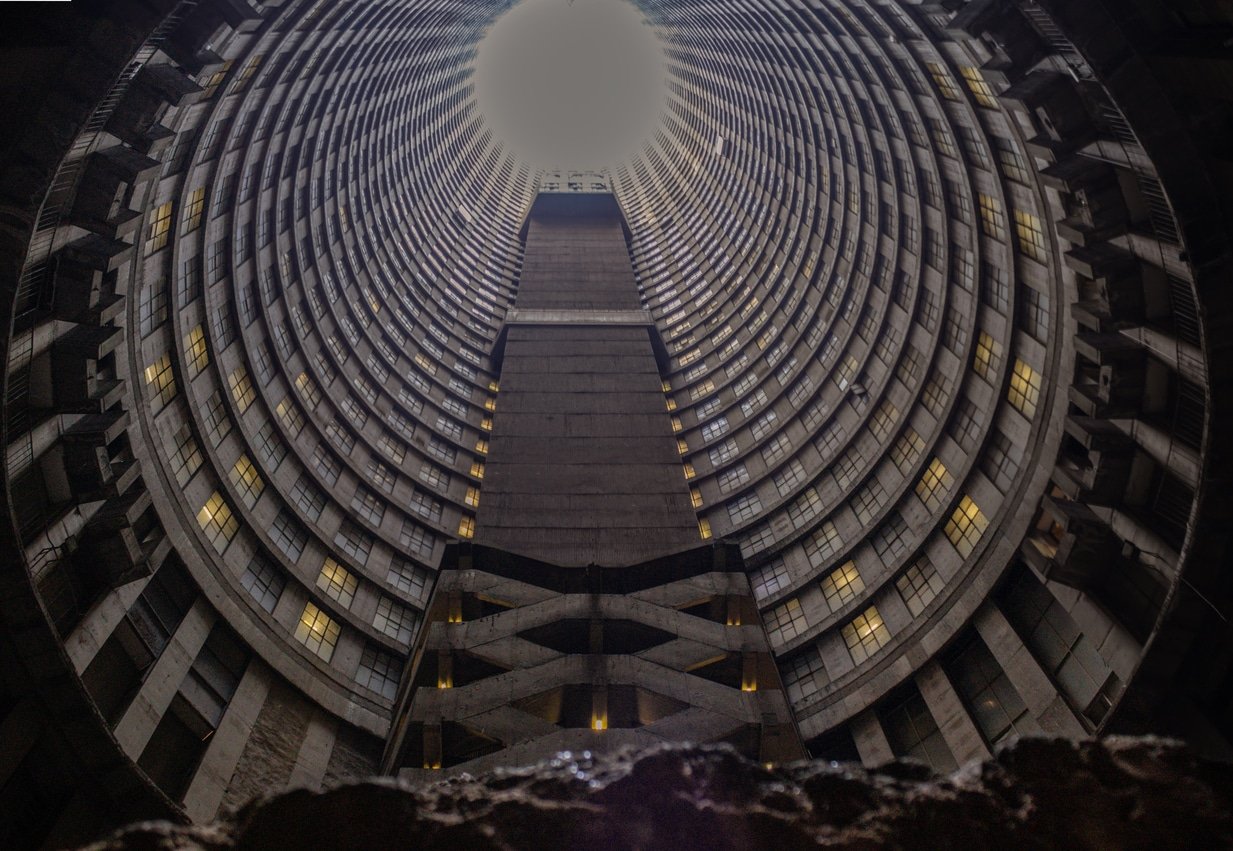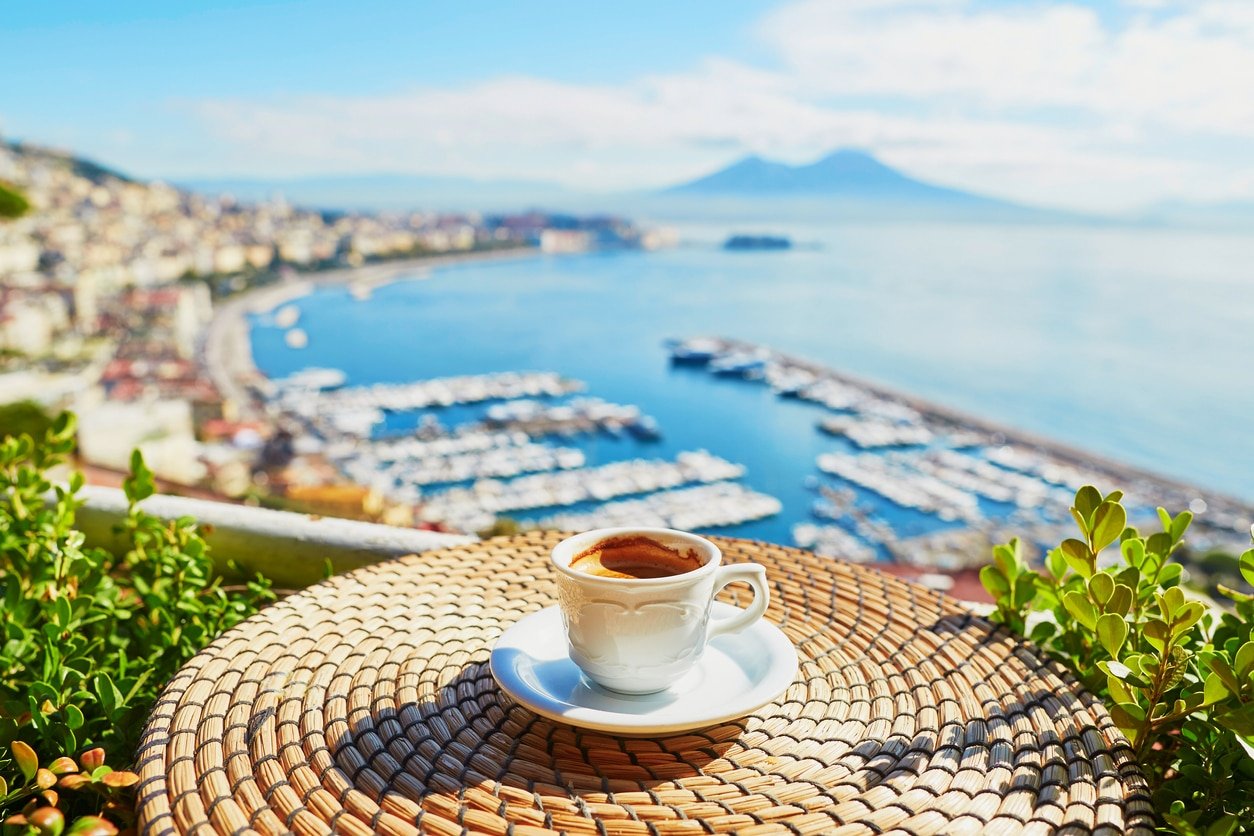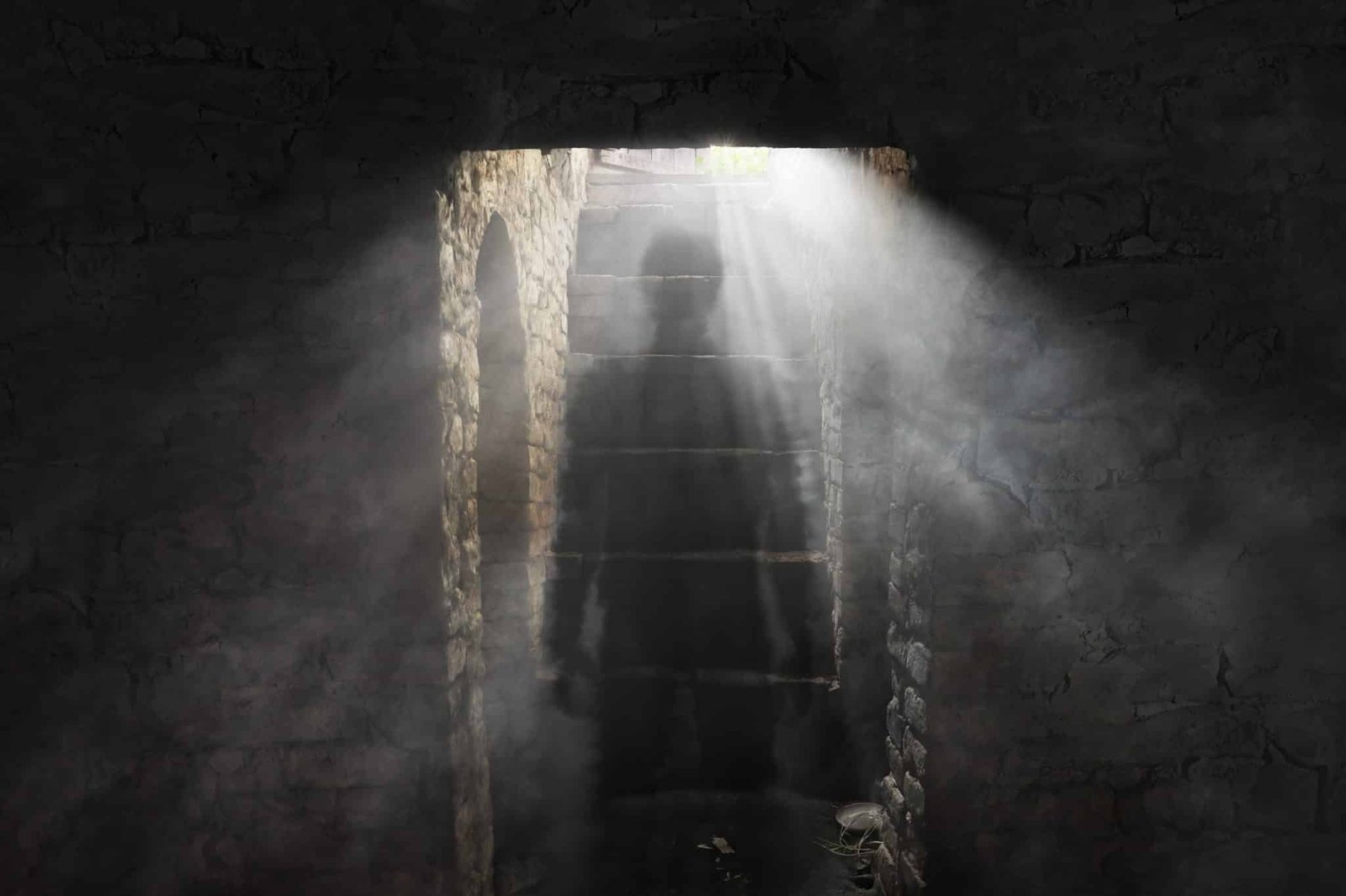12 Strange, Interesting & Important South Africa Dark Tourism Destinations
|
Prefer listening over reading? We got you covered!
Getting your Trinity Audio player ready...
|
South Africa has always been a country that turns heads, and not always for the best reasons. It was 1994 when the country finally abolished its Apartheid Era thanks to the efforts of strong opposition leaders like the beloved Nelson Mandela and entered a new dawn as the Rainbow Nation.
With 11 national languages and some of the most richly diverse cultures on the African continent, it has become a popular destination for travellers around the world who want to trek through the wilder side of tourism.
Most tourists to the country come for the opportunity to brush shoulders with the Big 5 in South Africa’s picturesque game reserves. Wildlife tourism is a hit with open vehicles, luxury lodges, and close encounters with some of Africa’s big cats, elephants, and rhinos.
But the unpredictability of nature may leave some tourists wanting, and that’s when the stranger side of South Africa might come in handy.
So when you grow tired of seeing Mufasa sleeping in the shade, why not take a look at South Africa’s dark tourism? You might find it quite interesting….
From sad yet important historical sites to the just plain obscure, South Africa shows its colours and history through these 12 dark tourism sites.

12 Macabre, Strange & Interesting Dark Tourism Destinations of South Africa
1. Robben Island
Robben Island has close to 500 years of history that has changed and defined it since the first settlers took hold on South African shores.
It served as a Leper colony for close to two decades before becoming a high-security prison that held famed Apartheid figures like Nelson Mandela, Walter Sisulu, and Tokyo Sexwale. In 1999, it was inscribed as a World Heritage Site.
Unlike the attraction of Alcatraz in the US, the prisoners held on Robben Island were not murderers but political criminals convicted by the apartheid government.
The conditions were poor, to say the least, and it stands as an important relic of the darkest aspects of South African history and as one of the most important tourist sites in South Africa, nevermind dark tourism.
Today, guided tours take you through the cellblocks, the lepper villages, and the island quarries where the entire history is regaled in thrilling stories, and some by former prisoners themselves.
The island hardly strikes fear into the hearts of South African locals anymore. Luckily we’ve eradicated most cases of leprosy, and the prison was converted into a museum. Plus, there are cute penguins running around the rocky shores! The only thing scary is the price of the souvenirs!
Location: Cape Town
Tags: Historical
2. Apartheid Museum
Another sobering tribute to the harsh truth behind the Apartheid, this museum serves as a reminder to locals and a lesson to foreigners on the unjust, inhumane acts brought about by a segregated society.
You’ll also be able to further understand the story of Apartheid heroes like Steve Biko and the significant role they played in the fight for freedom from segregation.
This pivotal part of South African history has laid the foundation for the laws and regulations the country has in place now.
There are horrifying articles, descriptions from Apartheid officers of the brutal acts they were asked to commit, sobering truths about acts meant to spark change, and so much more available throughout the museum.
Much like a holocaust site, the mere idea of these acts being committed is heartbreaking. Stepping inside, you’ll transport yourself to a time when segregation meant you couldn’t hug your best friend based on the colour of their skin. But it’s a symbol of hope.
It will help you appreciate the beauty of South Africa as it is now. We promise you’ll step outside and want to hug the nearest stranger!
Location: Johannesburg
Tags: Historical
3. District Six Museum
District Six was a vibrant multicultural neighbourhood that thrived within the city of Cape Town until the Group Areas Act was introduced in the ‘60s.
Families that had lived in the area for generations, descendants of slaves brought across by original settlers, were forcibly removed from their homes and moved to slums outside the city.
When Apartheid was abolished, the surviving residents of District Six and their descendants were offered compensation or the opportunity to reclaim their homes, but it made slow progress in healing the ugly scars left by the Group Areas Act.
The District Six Museum is a colourful reminded of the history, pre-Apartheid and during, with a major focus on the stories of the residents who once lived there. It’s a beautifully tragic memorial filled with artwork, photographs and more.
Part of the Museum is also the St. Mark’s Anglican Church, which, as a holy place, was left unaltered by the Apartheid government.
Try as they might with bribery and threats, the clergy laughed it off and continued to preach every Sunday to the same locals who travelled from further afield to attend.
Location: Cape Town
Tags: Historical; Cultural
4. Nelson Mandela Capture Site
The face of the Apartheid resistance, Nelson Mandela, was a highly wanted man in the ’60s and 70s. Nelson Mandela was a political activist fighting against the government and making quite a few enemies in the process.
He evaded law enforcement for 17 months before being captured in the Howick area of KwaZulu Natal one fateful day after police heard rumours of his potential whereabouts.
As hard as he tried to disguise himself, he ultimately was taken into custody and became the famed inmate 46664 of Robben Island prison for 28 years.
The site of his capture became a monument and a tribute to the great man himself, with a unique art feature that may look like random poles in the ground, but when you stand at the right angle, it reveals Mandela’s portrait.
A short walk away is a small memorial museum that reminisces on Mandela’s life and the years surrounding his capture. It’s quite interesting to read, hear and see the struggles this great man went through and how his efforts have changed the face of an entire country forever.
He may be gone, but he’s left behind an unfathomable legacy.
Location: Mandela Capture Site, R103, Howick
Tags: Historical
5. The Orlando Towers
Soweto falls into one of the off-the-beaten-path destinations of South Africa and actually has quite the reputation for being unsavoury.
It’s a township located just outside of Johannesburg and is a glimpse into the unfortunate lasting effects of Apartheid. Soweto and its surrounding areas were amongst South Africa’s fastest-growing populations, with high energy consumption that prompted the building of the Orlando Power Station.
It was abandoned in 1997, and the cooling towers got a facelift that included an interesting paint job and a new purpose.
That purpose? Well, bungee jumping, of course! You can now take a leap of faith off an abandoned cooling tower! Take that, Chornobyl! You ain’t got nothing on this!
Experience the local culture, mingle with the locals, view some artwork, learn some history and get your blood pumping all on the same day. Now that’s Mzansi.
Location: Orland, Soweto
Tags: Historical; Adventure; Cultural
6. Nottingham Road Hotel
Nottingham Road, or “Notties”, as the locals affectionately call it, is a picturesque rural area running through the breathtaking farmlands in the KwaZulu Natal Midlands. Despite the name, Nottingham Road is not a street.
One of the most popular stops in the area is the Nottingham Road Hotel, which now houses a sneaky brewery and the Notties Pub. This hotel has been around since 1889. Formerly known as the Railroad Hotel, it was the social hub for the Midlands region, attracting all sorts of well-to-do people.
It is rumoured to be haunted by quite a few ghosts, with the most famous being a morally loose lady in white called “Charlotte”, who tends to hang around room 10 a lot. The stories change from having her heart broken to murder, but one thing’s for certain, she definitely doesn’t want to leave! Their craft beer is just that good.
Location: Nottingham Road, KwaZulu Natal
Tags: Paranormal; Supernatural; Historical
7. The Cradle of Humankind
South Africa has had a long, multidimensional history that’s left some interesting artefacts in its wake, one of which is the Cradle of Humankind.
Africa itself has always been thought of to be the birthplace of humanity as we know it, and South Africa just gives some concrete, or rather fossilized, proof of it.
Some of the world’s oldest known living organisms have been discovered in paleoanthropological sites around the country, but none will ever match up to the astounding reputation of Marokeng and the Cradle of Humankind.
Hundreds of ancient hominid remains have been discovered here, including the over two million-year-old “Mrs Ples” fossil.
It’s an intricate and well-protected site that does allow guided tours for visitors to see the many ancient discoveries being unearthed. As humans, we’re constantly looking for the answer to the “Missing Link” question, and a few palaeontologists believe the Cradle of Humankind may hold the key. Only time will tell.
A visitors centre and a movable structure nicknamed “the beetle” are where you’ll find some of their most interesting discoveries. While the excavation of the site has been on hold since 2009, we still hold out the hope that they’ll find our some thousand great Uncle buried here.
Location: Johannesburg
Tags: Historical; Archaeological
8. The Wood’s Cycad
If you ever think you’re forever alone, we’ll just introduce you to the Wood’s Cycad in Durban. This plant is the only known surviving member of its species and a highly sought-after black-market item.
Considered to be living fossils, Cycads are already considered to be amongst the rarest of plant families across the world, with some species dating back to the days dinosaurs roamed the earth.
So when Wood’s Cycad was found, it was an absolute miracle. In 2009, the Durban Botanical Gardens saw nearly 20 of their resident cycads stolen in the first-ever theft known of this kind there. Luckily, the massive Wood’s Cycad was left unharmed and continues to offer a pivotal role in research and resurrection efforts.
The plant may never find a lady of its own species, but thanks to genetic similarities, has been bred with other Cycads to create interesting hybrids in the hopes of one day breeding a female genetic match and saving the species.
Botanists continue their hunt for the elusive female, hoping somewhere in the wild one still survives, but as for now, you can find the Wood’s Cycad on the plant version of Tinder, swiping it up in the hopes of finding its perfect match.
Location: Durban Botanical Gardens, Kwazulu Natal
Tags: Historical, Natural
9. Adam’s Calendar
One of South Africa’s best-kept secrets are the Blaauwboschkraal Stone Ruins. We’d recommend grabbing a 4×4 to reach them, as you’ll traverse the rugged terrain of Mpumalanga using dirt roads.
Their exact origin is still up for speculation. But it’s known as “Africa’s Stonehenge”, and features low-bearing rock structures and 5-ton monoliths placed in a manner similar to those discovered in Europe.
There’s a loose relationship to celestial bodies and the old civilizations of South Africa that existed before the first known European and Northern African Settlers.
If you stumbled across the area by chance, we don’t think you’d bat an eyelid. The stones look like part of the landscape and are only spotted in all their glory with aerial views from drones and planes.
But that doesn’t mean you shouldn’t make an effort to go find these mysterious ruins that form a part of South Africa’s intricate prehistoric lineage. Maybe it was aliens? Or maybe Africa has some long-lost ancient civilization they never knew about.
Whatever the case, the Blaauwboschkraal Stone Ruins and Adam’s Calendar are some of South Africa’s most unique dark tourism destinations.
Location: Mpumalanga
Tags: Historical; Ruins; Prehistoric
10. Vredefort Impact Crater
The history of the world as we know it is turbulent and full of destruction. We’re not talking about wars and human impact, but rather the violent natural disasters responsible for wiping out the dinosaurs and other prehistoric creatures.
These disasters have left notable scars that have formed lakes, valleys, canyons and other natural phenomena.
South Africa is home to the largest known impact crater from a meteor strike in the world. It was once thought to measure between 180 to 300 kilometres in diameter but has eroded throughout the millennia that have passed.
Fortunately, there is still enough evidence of this massive crater for scientists to study and for curious tourists to see.
The town of Vredefort is nestled in the centre of the impact site and perfectly sheltered by the Vredefort Dome that it formed. While you might not be able to grasp it, just take a breath and understand how truly incredible this is!
Millions of years ago, the entire face of the earth was changed by a huge single-release energy event. Evolutionary traits in animals, plants and biomes were altered, and if it hadn’t been for a massive asteroid hitting this spot in Gauteng, humans may never have evolved.
Location: Gauteng
Tags: Prehistoric; Natural Disaster;
11. Ponte Tower
Ponte Tower is quite the recognizable landmark in Johannesburg that’s been featured in the Resident Evil franchise and even a Drake music video. It has now become synonymous with the Apocalypse, and we can certainly see why.
The building was once a pipe dream to create upmarket living in the Hillbrow area, with the cylindrical feature being a statement piece.
It was well-liked in its early years, attracting quite the crowd to look at the unique architectural feat, but as the area surrounding it went into social decline, criminal activity rose to alarming heights.
Ponte Tower became a husk of the pride and joy it once gave the Apartheid Era government, instead becoming symbolic of the collapse of the era.
Residents still call the tower home, but they’re not as affluent as before, and the building has gone into a state of decay you’d only expect to see from post-apocalyptic cities.
The city around it is gentrifying, and efforts are being made to restore Ponte’s former glory, but for now, take comfort in taking a tour of the eerie movie set with local guides, they’ll open your eyes to the truth of it. Ponte is home to many, and not the seedy underbelly of South Africa’s capital.
Location: Johannesburg
Tags: Historical; Cultural; Media






